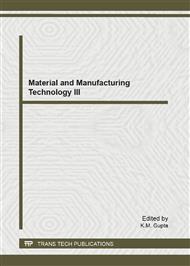p.421
p.425
p.429
p.433
p.438
p.444
p.450
p.456
p.461
Expert System for Acidizing Based on BP Neural Network
Abstract:
The technique of acidizing stimulation is one of the most critical measures in petroleum industry to enhance production. As acidizing technique being an integrated course which combines science, practice and experience in one, it cannot be explained by mathematical technique precisely. For conventional acidizing, the workload is extremely huge and complicated, since it has built an extensive database with the help of a huge amount of the application samples. The Neural Network has the generalization ability, which not only has the most consistency with training samples, but also is a dependable network for predication of test samples, whose data distribution is similar to the previous ones. Expert system for acidizing based on the BP Neural Networks can predict a favorable acidizing fluids system and suitable dosage reasonably, effectively and accurately with a large pool of initial input parameters. Thereby this expert system can assist field application and realize the systematization and intelligence in oil field.
Info:
Periodical:
Pages:
438-443
Citation:
Online since:
July 2012
Authors:
Price:
Сopyright:
© 2012 Trans Tech Publications Ltd. All Rights Reserved
Share:
Citation:


